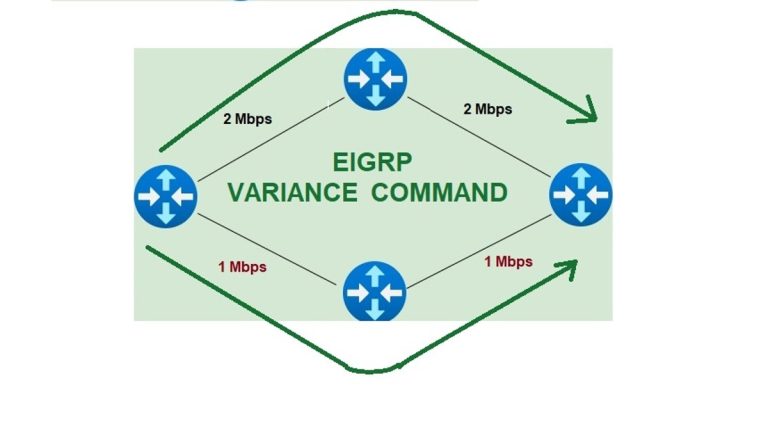EIGRP K Values: Easy Tutorials in Step-by-Step
Introduction
EIGRP k values decide in the EIGRP routing protocol of how to reach a destination on the fastest path. EIIGRP doesn’t use a single value in its metric calculation, as with RIP and OSPF. However, EIGRP uses a combination of different values in its metric calculation. We know these different values as K values. K is just a variable name, which represents these values.
EIGRP K values
There are five different K values, which are defined below one by one.
- K1: K1 represents the link’s bandwidth in the EIGRP—metric calculation formula. If there is more than one hop in the path, then take the smallest bandwidth of the link.
- K2: The 2n value in the EIGRP metric value is K2, which represents load. When calculating the EIGRP metric in the formula, we take the cumulative load of all the outgoing interfaces in the path. The EIGRP metric defines load as the “total activity on the link”. The load is a dynamic value in EIGRP, which fluctuates during communication.
- K3: The third important value of the EIGRP metric calculation process is K3 (load). It represents the total delay from Soucé to the outgoing interface’s destination. We take the K3 (load) = 1 in the metric calculation formula.
- K4 (Reliability) ensures that all the frames successfully reach the destination. We take reliability as the average of all the outgoing interfaces in the path. The representation of reliability ranges from 0 to 255. 0 denotes the frame hasn’t reached the destination, while 255 denotes that the frame has successfully reached.
- K5: The 5th k metric value is MTU. MTU does not play a direct role in EIGRP metric calculation. However, it is used in situations where the number of similar cost paths exceeds the number of allowed paths.
Suppose we allow 7 paths for eigrp load balancing and the EIGRP counts 6 same cost paths to the destination, then it will ignore the path that has the lowest MTU.
Normally, K1 and K3 values are on, and k2,k4, and k5 values are off by default. The EIGRP metric formula is given below:

Lab Topology
Our lab topology consists of three routers that are connected. Run EIGRP on all the routers with IP addresses.

Check the K values through the show ip protocols command.

Check the routing table of R1

In the above table, the network 2.0.0.0/8 has a metric is 30720. If you want that how to calculate the metric to achieve a 30720 answer, then follow the step-by-step tutorials in the below screenshot. But, first, check the interface bandwidth and delay in the following command.

The bandwidth is 100000, and the delay is 100. Now put these values in the formula as shown in the below topology diagram. In the below screenshot, we are going to calculate 2.0.0.0/8 network metric calculation at R1. As the bandwidth is the same on both links, so we will take only one link’s bandwidth. Similarly, the delay of both links is 100. But, we divide the delay by 10, so it will become 10. At the last, the cumulative delay is 10 + 10 = 20.

So, we got the exact Meriç value of the network 2.0.0.0/8, which is shown in the routing table.





